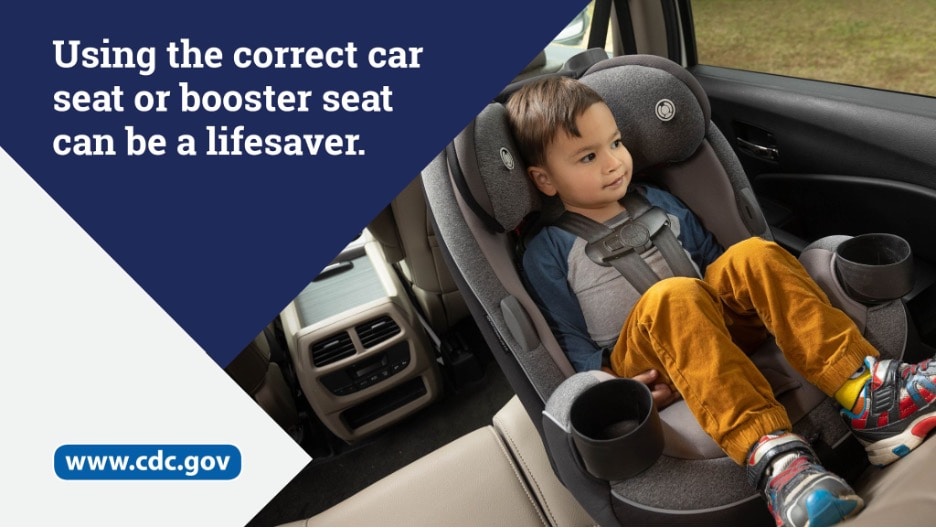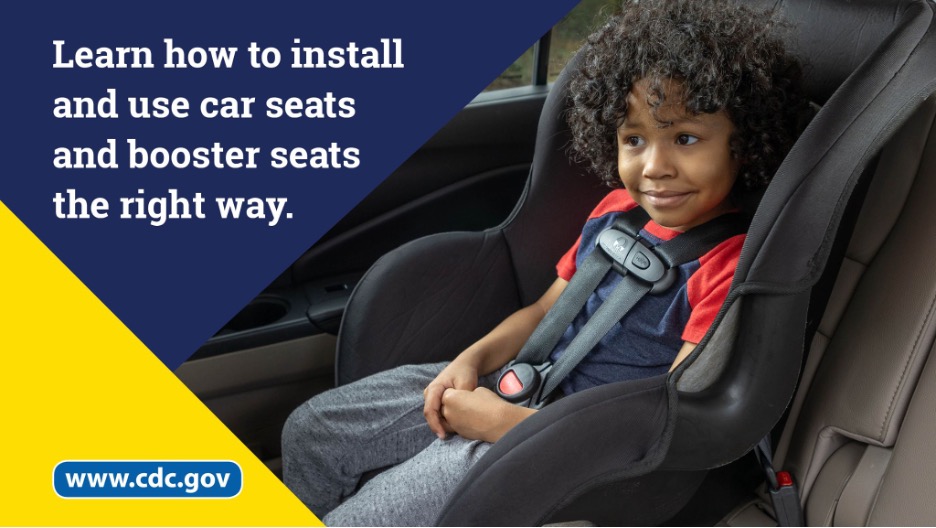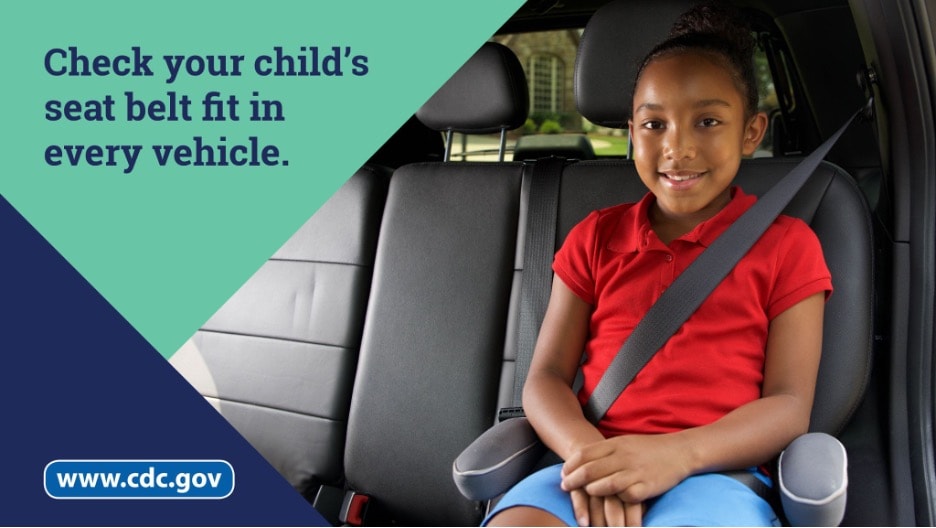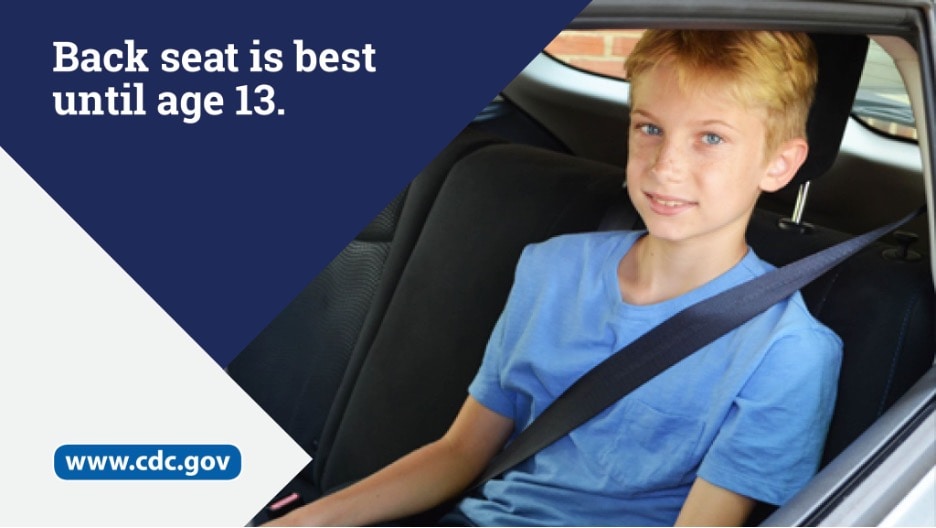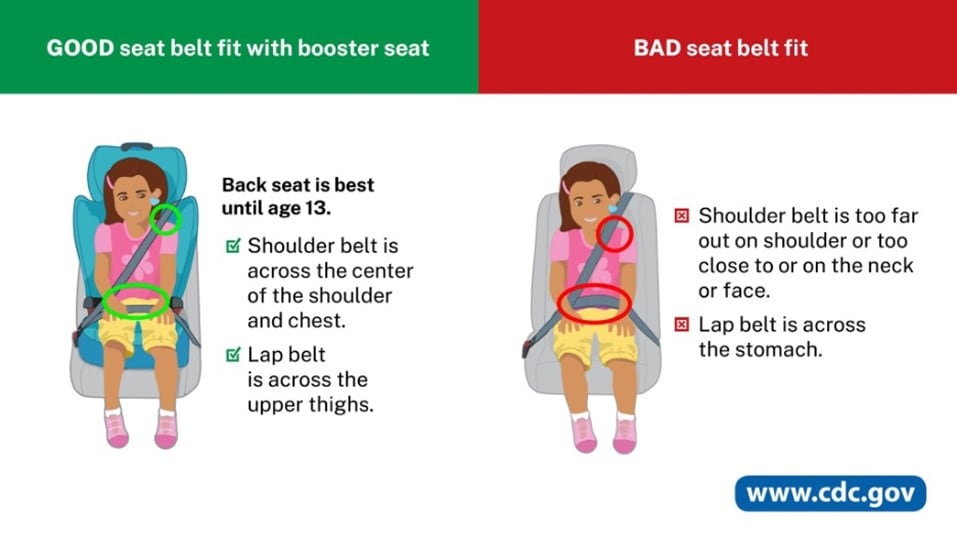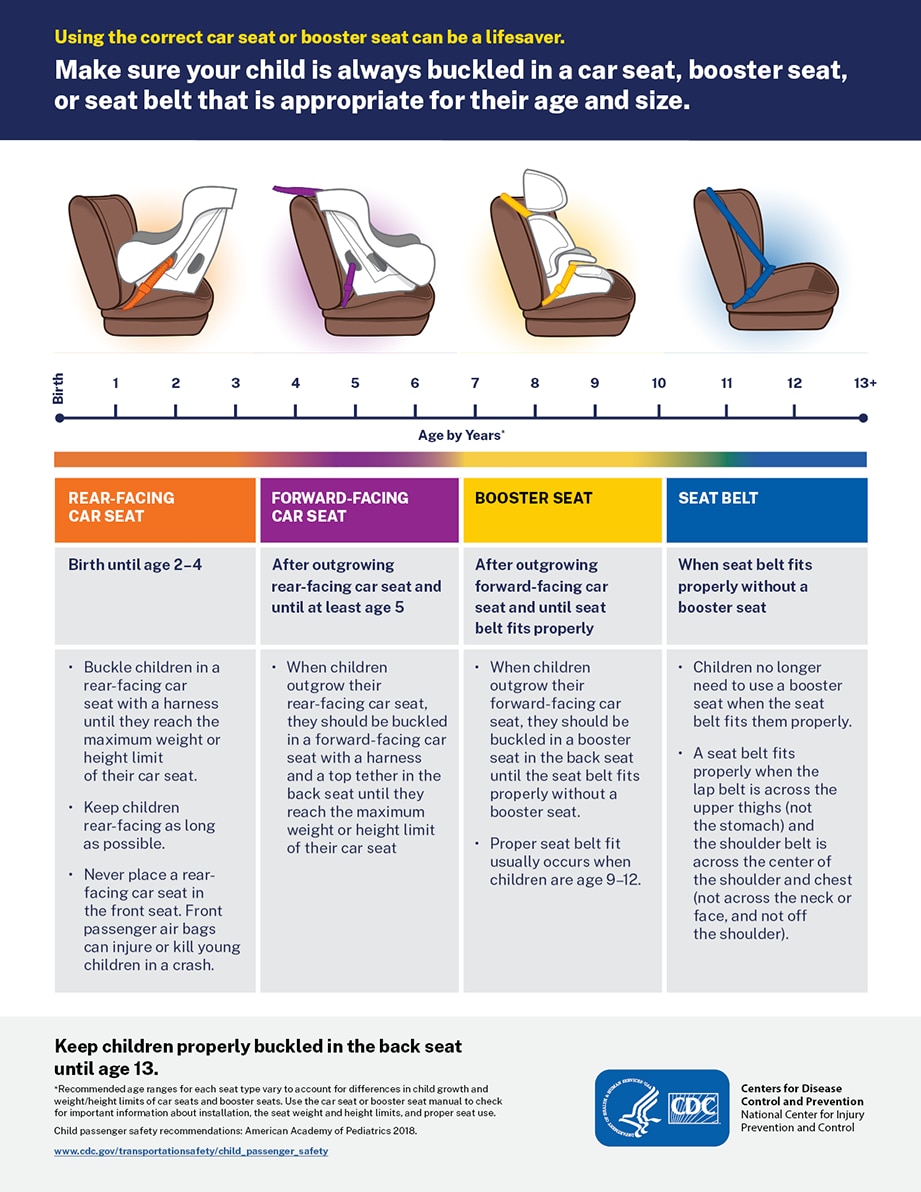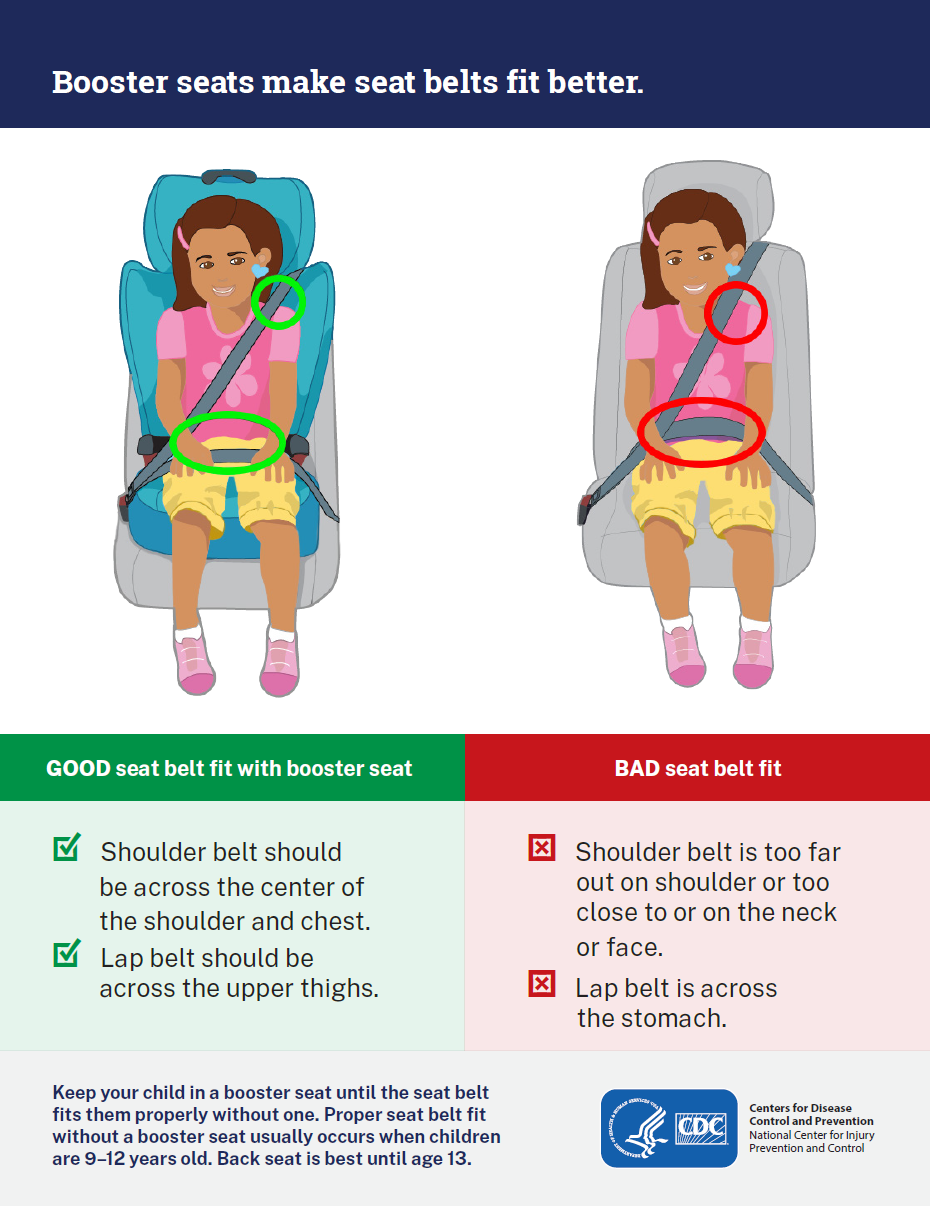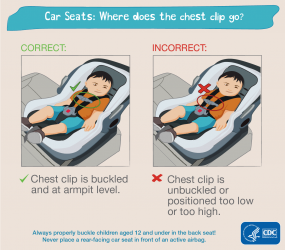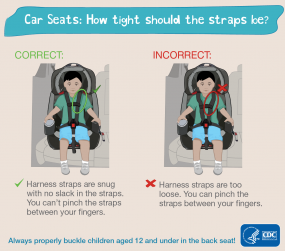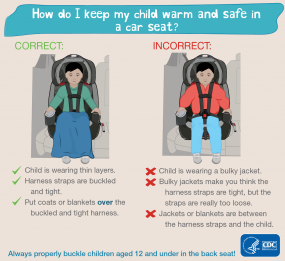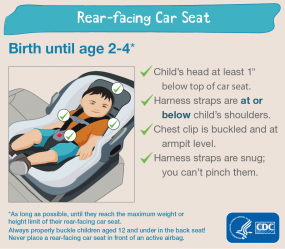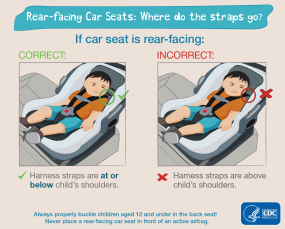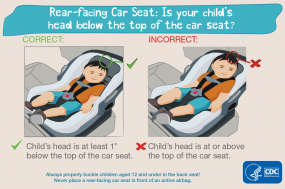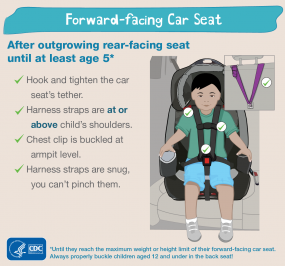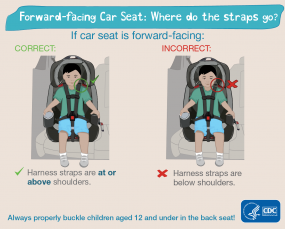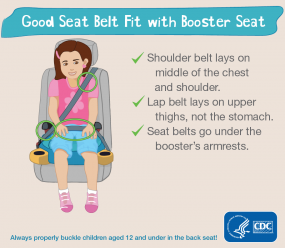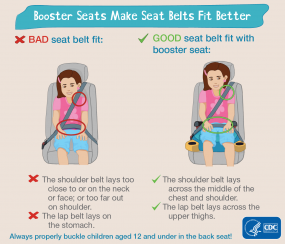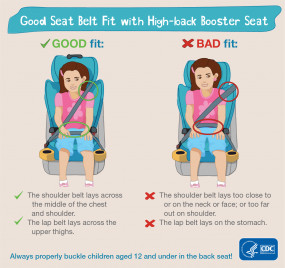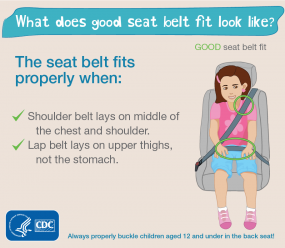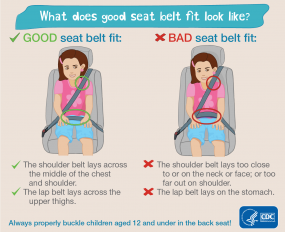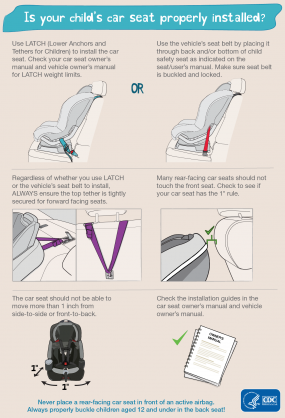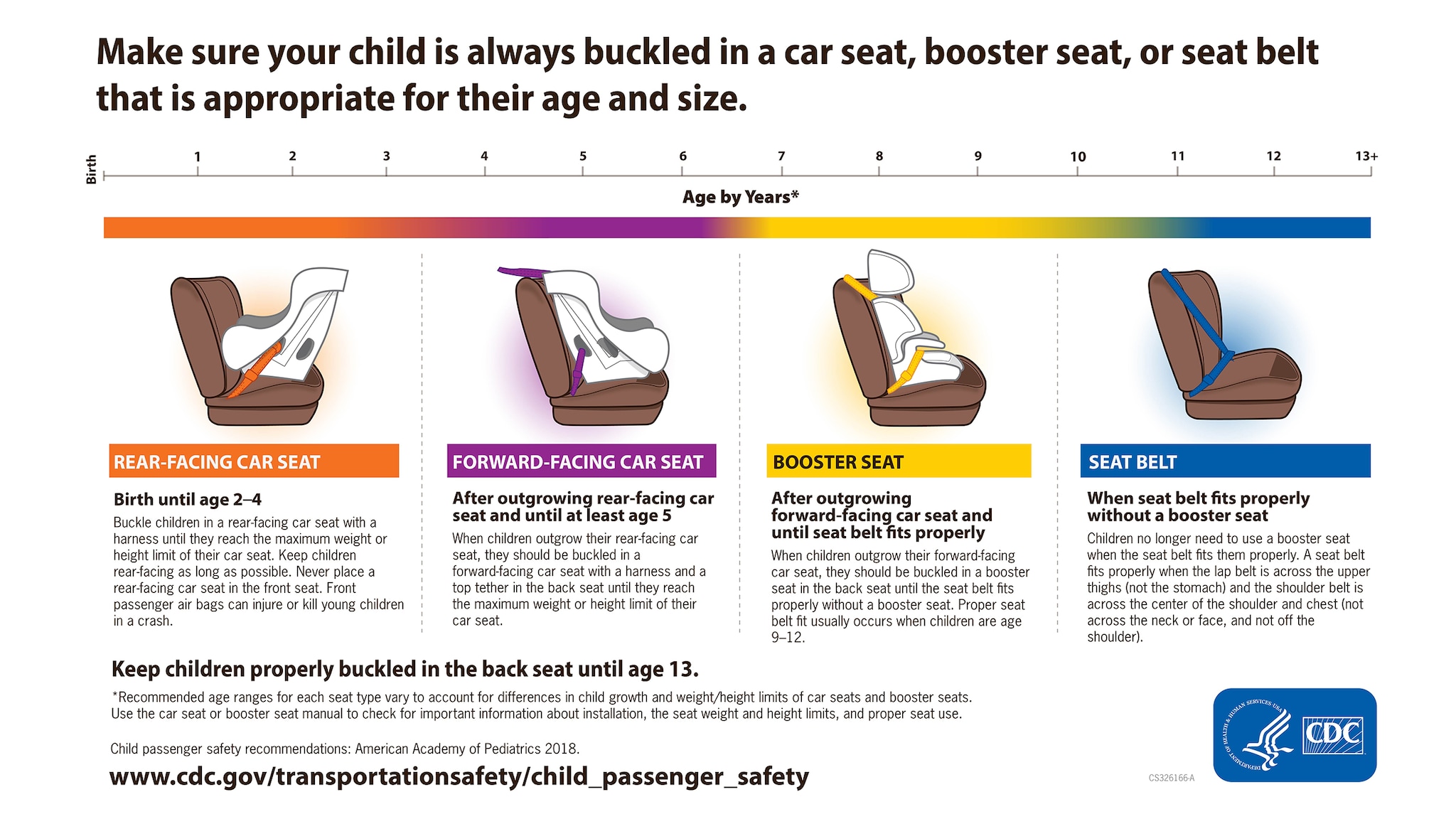Resources
The Division of Injury Prevention developed social media graphics and messaging products for key audiences, including parents and caregivers and partner organizations who communicate to parents and caregivers about child passenger safety.
How to Avoid the Most Common Mistakes
Rear and Forward-Facing Car Seats
Rear-Facing Car Seats
Forward-Facing Car Seats
Use LATCH (Lower Anchors and Tethers for Children) to install the car seat. Check your car seat owner’s manual and vehicle owner’s manual for LATCH weight limits. OR use the vehicle’s seat belt by placing it through back and/or bottom of child safety seat as indicated on the seat/user’s manual. Make sure seat belt is buckled and locked.
Regardless of whether you use LATCH or the vehicle’s seat belt to install, ALWAYS ensure the top tether is tightly secured for forward-facing seats. Many rear-facing car seats should not touch the front seat. Check to see if your car seat has the 1″ rule.
The car seat should not be able to move more than 1 inch from side-to-side or front-to-back. Check the installation guides in the car seat owner’s manual and vehicle owner’s manual.
Never place a rear-facing car seat in front of an active airbag. Keep children properly buckled in the back seat until age 13!
Using the correct car seat or booster seat can be a lifesaver: make sure your child is always buckled in a car seat, booster seat, or seat belt that is appropriate for their age and size.
- Rear-facing car seat: Birth until age 2-4. Buckle children in a rear-facing car seat with a harness, in the back seat, until they reach the maximum weight or height limit of their car seat. Keep children rear-facing as long as possible. Check the car seat manual and labels on the car seat for weight and height limits. Never place a rear-facing car seat in the front seat. Front passenger air bags can injure or kill young children in a crash.
- Forward-facing car seat: After outgrowing rear-facing car seat and until at least age 5. When children outgrow their rear-facing car seat, they should be buckled in a forward-facing car seat with a harness and top tether, in the back seat. They should stay in their forward-facing seat until they reach the maximum weight or height limit of their seat. Check the car seat manual and labels on the car seat for weight and height limits.
- Booster seat: After outgrowing forward-facing seat and until seat belt fits properly. When children outgrow their forward-facing car seat, they should be buckled in a belt-positioning booster seat until the seat belt fits properly without a booster seat. A seat belt fits properly when the lap belt is across the upper thighs (not the stomach) and the shoulder belt is across the center of the shoulder and chest (not across the neck or face, and not off the shoulder). This usually occurs when children are between 9 and 12 years old.
- Seat Belt: When the seat belt fits properly without a booster seat. Children no longer need to use a booster seat when the seat belt fits them properly. A seat belt fits properly when the lap belt is across the upper thighs (not the stomach) and the shoulder belt is across the center of the shoulder and chest (not across the neck or face, and not off the shoulder). This usually occurs when children are between 9 and 12 years old.
Keep children properly buckled in the back seat until age 13.
*Recommended age ranges for each seat type vary to account for differences in child growth and weight/height limits of car seats and booster seats. Use the car seat or booster seat manual to check installation and the seat weight and height limits, and proper seat use.
Child safety seat recommendations: American Academy of Pediatrics 2018.
Graphic design: Adapted from National Highway Traffic Safety Administration.
Listen to CDC podcasts on your computer or download them for reliable health and safety information when and where you want it. New to podcasting? See Podcast Help.
- Kids in Cars (2015 Cup of Health)
- Kids in Cars (2015 Minute of Health)
- Kids in Cars (2014 Cup of Health)
- Kids in Cars (2014 Minute of Health)
- Vital Signs – Child Passenger Safety
- Seguridad de los niños en automóviles (Child Passenger Safety)
- Restrain Your Children (Cup of Health)
- Restrain Your Children (Minute of Health)
- Buckle ’em Up
